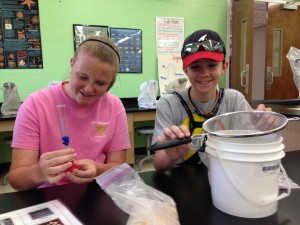Understanding Micro Particles in the Ocean

Originally appears in the Fall 2014 issue
THE ACCUMULATION OF marine debris along beaches, in estuaries, and in the open ocean is a massive environmental issue, growing in urgency. Along with the important issues of sea level rise and ocean acidification, marine debris accumulations have been recognized as a 21st century global challenge.[i] This human-made debris can affect health, safety, (medical waste, toxic chemicals) the economy (it is costly to remove marine debris), and biota of the marine environment (entanglement, ingestion). Much of this debris consists of plastic, which can persist in the marine environment for long periods of time. Just how long it takes is dependent on the exact material and the conditions under which it is degrading. Plastic polymers are stable and do not readily degrade in the environment. Plastic photodegrades, breaking down into smaller and smaller pieces referred to as microplastics. Marine debris can be found virtually anywhere one might look within the ocean and coastline; indeed, it is a wide-spread pollution problem.
Ironically, most of this ocean debris is preventable, through adjustments in societal behaviors, ordinances, and the daily practices of all citizens. Disturbing media coverage of tsunami debris and oceanic garbage patches have increased public awareness of the issue, and local efforts such as volunteer beach cleanups have focused on mitigating some coastal sites. But there is much more that needs to be done to increase general awareness about the issue, starting with education that examines the sources of debris, and mechanisms to reduce them.
Cleanup efforts to date are laudable, but they omit what may be an important—and even more poorly understood—component of the debris. Micro plastics, the small (less than 5 mm) plastic particles now ubiquitous in the coastal environment, are also common constituents of cosmetics and facial scrubs, and other commercial products, and large quantities are washed down the drain every day.
How then do we build citizen’s awareness of current global issues like marine debris, or micro plastics? Action-based, conservation programs are a useful tool to foster environmental awareness and stewardship among youth as we face important environmental challenges. We, the authors, have developed an environmental education program focusing on marine debris shoreline surveys as a useful tool to improve efforts, which we are sharing with you here.
To view the photo-rich magazine version, click here.
If you are not already a subscriber, please subscribe to read the full article
Dodie Sanders is a Marine Educator for the University of Georgia Marine Extension. Katelyn Hunt is a Georgia Sea Grant Marine Education Intern.
Leave a Reply
You must be logged in to post a comment.





